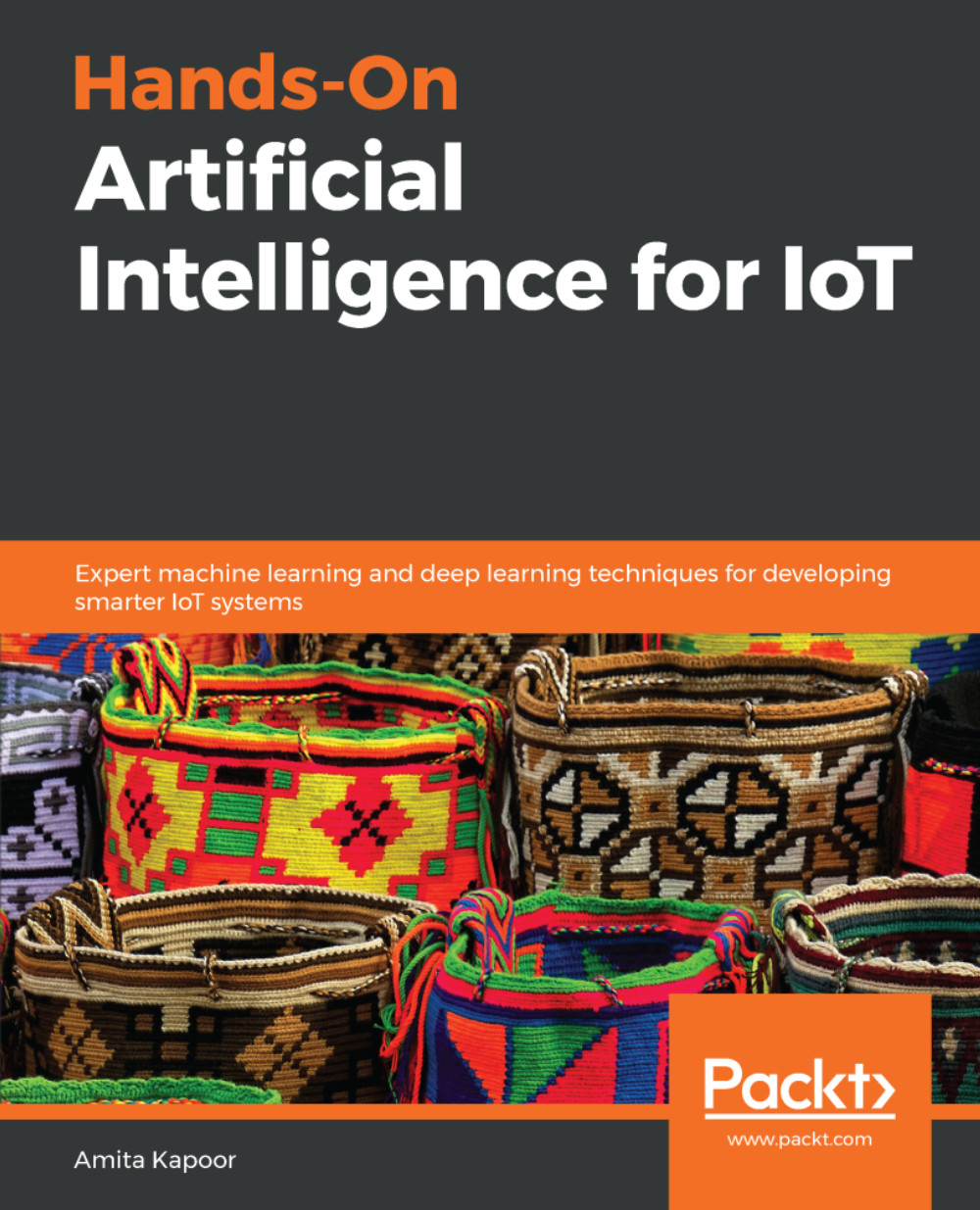The term machine learning (ML) refers to computer programs that can automatically detect meaningful patterns in data and improve with experience. Though it isn't a new field, it's presently at the peak of its hype cycle. This chapter introduces the reader to standard ML algorithms and their applications in the field of IoT.
After reading this chapter, you will know about the following:
- What ML is and the role it plays in the IoT pipeline
- Supervised and unsupervised learning paradigms
- Regression and how to perform linear regression using TensorFlow and Keras
- Popular ML classifiers and implementing them in TensorFlow and Keras
- Decision trees, random forests, and techniques to perform boosting and how to write code for them
- Tips and tricks to improve the system performance and model limitations


